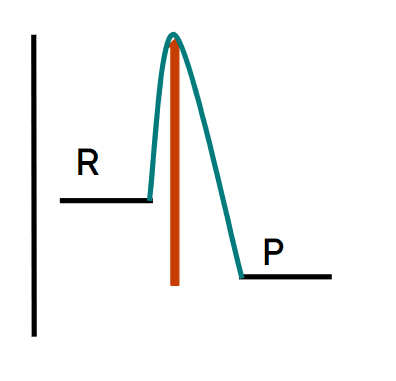Myths about teaching can hold you back
- Year 10
- AQA
- Higher
Reaction profiles
I can draw, label and interpret reaction profiles for exothermic and endothermic reactions, and understand the changes these cause in the surroundings.
- Year 10
- AQA
- Higher
Reaction profiles
I can draw, label and interpret reaction profiles for exothermic and endothermic reactions, and understand the changes these cause in the surroundings.
These resources were made for remote use during the pandemic, not classroom teaching.
Switch to our new teaching resources now - designed by teachers and leading subject experts, and tested in classrooms.
Lesson details
Key learning points
- A reaction profile compares the amount of energy the products of a reaction have compared to the reactants.
- Exothermic chemical reactions transfer energy from reactants to the surroundings causing an increase in temperature.
- Endothermic chemical reactions transfer energy from the surroundings to the products causing a decrease in temperature.
- Activation energy is the minimum amount of energy transferred to reactants that allows a chemical reaction to start.
Keywords
Exothermic - An exothermic chemical reaction is a type of reaction in which energy is transferred from the reactants to the surroundings, e.g. combustion.
Endothermic - An endothermic chemical reaction is a type of reaction in which energy is transferred from the surroundings to the products, e.g. photosynthesis.
Activation energy - The minimum energy that the particles must have in order to react is known as the activation energy.
Reaction profile - A reaction profile is a diagram showing the energy changes during exothermic and endothermic reactions.
Common misconception
Pupils often confuse energy with temperature and therefore expect the products to be higher than the reactants for exothermic reactions i.e. due to temperature increase, and lower for endothermic.
It is useful to discuss the energy transfers occurring during the reaction e.g. exothermic reactions involve the reactant's chemical energy store converting to a smaller chemical energy store in the products and a thermal energy store.
To help you plan your year 10 chemistry lesson on: Reaction profiles, download all teaching resources for free and adapt to suit your pupils' needs...
To help you plan your year 10 chemistry lesson on: Reaction profiles, download all teaching resources for free and adapt to suit your pupils' needs.
The starter quiz will activate and check your pupils' prior knowledge, with versions available both with and without answers in PDF format.
We use learning cycles to break down learning into key concepts or ideas linked to the learning outcome. Each learning cycle features explanations with checks for understanding and practice tasks with feedback. All of this is found in our slide decks, ready for you to download and edit. The practice tasks are also available as printable worksheets and some lessons have additional materials with extra material you might need for teaching the lesson.
The assessment exit quiz will test your pupils' understanding of the key learning points.
Our video is a tool for planning, showing how other teachers might teach the lesson, offering helpful tips, modelled explanations and inspiration for your own delivery in the classroom. Plus, you can set it as homework or revision for pupils and keep their learning on track by sharing an online pupil version of this lesson.
Explore more key stage 4 chemistry lessons from the Energy changes in reactions unit, dive into the full secondary chemistry curriculum, or learn more about lesson planning.

Licence
Prior knowledge starter quiz
6 Questions
Q1.What is the role of a catalyst in a chemical reaction?
Q2.What happens during an exothermic reaction?
Q3. What happens during an endothermic reaction?
Q4. is needed for a chemical reaction to start.
Q5.What is energy transfer in a chemical reaction?
Q6.What is the role of activation energy in a chemical reaction?
Assessment exit quiz
6 Questions
Q1.What does a reaction profile show?
Q2.Which of the following reaction profiles shows an endothermic reaction?



Q3.Which of the following reaction profiles correctly represents the activation energy of the reaction with a red arrow, and where R is the reactant and P is the product?






